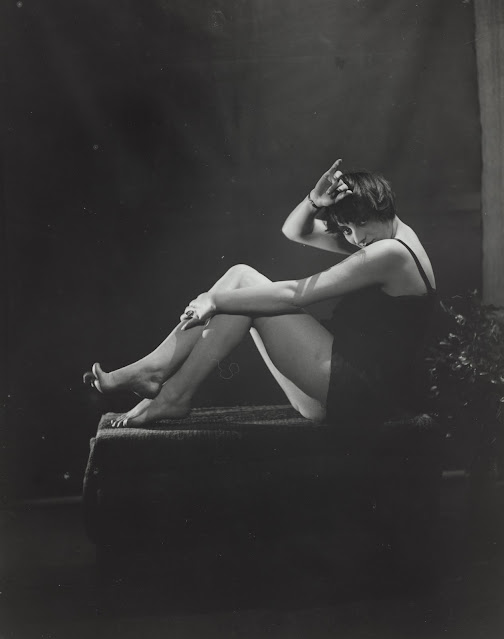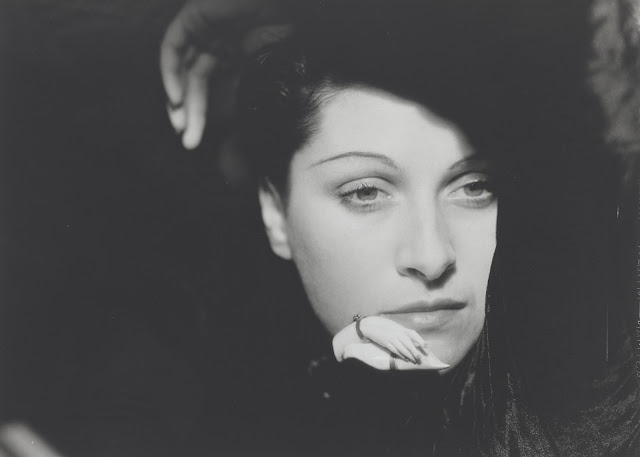PHOTO ELYSEE
29.03 – 04.08.24
This year, Plateforme 10 is celebrating 100 years of Surrealism. In 1924, André Breton published the manifesto of this major artistic movement of the 20th century. Among the artists associated with Breton were Luis Buñuel, Leonora Carrington, Salvador Dalí, Max Ernst, Alberto Giacometti, Dora Maar, Dorothea Tanning and a photographer: Man Ray. His photographic work covers a wide range of genres: portraits and nudes, fashion, still life and abstract photography, etc. A multi-faceted artist, he had a pronounced taste for experimentation and new processes: photograms, solarizations, optical manipulations, coupling of positives and negatives, etc.
A fixture of the Paris art scene in the early 20th century, close to Marcel Duchamp and André Breton, he is one of the few photographers mentioned alongside Dada and Surrealist artists. Man Ray, whose career spanned more than 60 years, is recognized today as one of the most influential photographers of the 20th century. He took his first photographs in New York in the 1910s. However, it was in the following two decades, while living in Paris, that he abandoned the idea of a career in painting to devote himself to photography. He saw in this medium a creative tool that would enable him to go beyond the representation of reality. He thus tried his hand at abstraction, while photographing the artists he came into contact with in a relatively classical manner.
Establishing himself as a professional photographer, he opened his own studio, which rapidly became a gathering place for the entire Parisian art scene: Henri Matisse, Pablo Picasso, Robert Delaunay, Alberto Giacometti, Salvador Dalí, Max Ernst. He made many portraits of artists, writers and intellectuals in his circle, including Coco Chanel, Paul Eluard, James Joyce, Elsa Schiaparelli, Igor Stravinsky and Virginia Woolf. In addition to celebrity portraits, he tried his hand at staging and photographing his female models–Lee Miller, Kiki de Montparnasse and Meret Oppenheim–in a variety of different settings.
To be totally liberated from painting and its aesthetic implications” was the first avowed aim of Man Ray (United States, 1890-1976), who began his career as a painter. Photography was one of the major breakthroughs of modern art and led to a rethinking of notions of representation. In the 1920s and 30s, the photographic medium came to the forefront of the avant-garde movement, and Man Ray soon made a name for himself with his virtuosity. As a studio portraitist and fashion photographer, but also as an experimental artist who explored the potential of photography with the people around him, Man Ray was a multi-faceted figure. Considered one of the 20th century’s major artists, close to Dada and then Surrealism, he photographed Paris’ artistic milieu between the wars.
Curated from a private collection, the exhibition explores the artist’s extensive social contacts while presenting some of his most iconic works. In addition to providing a dazzling who’s who of the Parisian avant-garde, the works also highlight the innovations in photography made by Man Ray in Paris in the 1920s and 30s. He took his first photographs in New York in the 1910s, but it was in Paris that his career took off.
Even before opening his studio in Montparnasse in 1922, Man Ray worked for a year in his hotel room. The photographer's reputation grew, and before long, the artist's studio was flourishing. Fashion photographs alternated with portraits of the artistic figures of the day who had made Paris’ notoriety: Marcel Duchamp, whom he met in New York in 1915 and who introduced him to the Parisian artistic elite, as well as Robert Delaunay, Georges Braque, Alberto Giacometti and Pablo Picasso, among others, who posed for the photographer. His portraits also included Ballets Russes dancers and guests at the Count de Beaumont's ball.
As soon as he arrived in Paris in the summer of 1921, Man Ray immediately became part of the Parisian intelligentsia of the Roaring Twenties. He met Jean Cocteau, who was himself a figure of the Parisian art scene, André Breton, Francis Picabia, Joan Miró, Salvador Dalí, Henri Matisse and Max Ernst. He also met Gertrude Stein, Virginia Woolf, Igor Stravinsky, Ernest Hemingway, Arnold Schoenberg and James Joyce, whom he photographed for the Anglo-American bookshop Shakespeare and Company. But Man Ray was not merely content to have celebrities pose in his studio or to explore the female nude genre by working with those he considered his muses, such as Lee Miller, Kiki de Montparnasse, Meret Oppenheim and Adrienne Fidelin.
Man Ray also experimented in the darkroom, transforming the photographic medium into a powerful tool of artistic expression, even going so far as to do away with the camera when, in 1921-1922, he began creating photograms, which he coined "rayographs" after himself. He explained that working with light in the darkroom allowed him to free himself from painting, so convinced was he of the visual power of his experiments.
Man Ray, Alice Prin, known as Kiki de Montparnasse, around 1925 © Man Ray 2015 Trust / 2024, ProLitteris, Zurich
Man Ray, Dora Maar, 1936 © Man Ray 2015 Trust / 2024, ProLitteris, Zurich
Also in the 1920s, he experimented with the moving image and produced four films. The rhythm and freedom offered by the cinema complemented his photographic work, in which he saw a close relationship between film and poetry. This is why he gave his film Emak Bakia (1926) the subheading of "cinépoème". Without ever abandoning portraiture, he experimented with other techniques in the 1930s: solarization, overprinting and other distortions.
From the outset, photography has been more than a simple process of reproduction. For him, images were not taken fleetingly, but meticulously realized indoors. Unlike Henri Cartier-Bresson who opted for the spontaneous gesture and saw the street as a privileged playground, Man Ray composed and staged his photographs. The studio provided him with a space in which to explore his imagination. Some of the themes dear to the Surrealists can be found in his work: femininity, sexuality, strangeness, the boundary between dream and reality. His nude studies were part of his artistic research, which he developed in close collaboration with his companions who were part of the Parisian art scene.
Kiki de Montparnasse– the woman with the f-holes of a violin on her back– whose real name was Alice Prin, was a dancer, singer, actress and painter who posed for artists such as Chaïm Soutine and Kees van Dongen. Lee Miller, a fellow New Yorker like him, had begun a modeling career in the United States but wanted to move to the other side of the camera. She met the photographer in Paris in 1929 when she was 22-years old, and became active in the Surrealist movement. More than a muse, she became his collaborator, learning photography at his side. Together, they discovered the technique of solarization.
Another artist with whom Man Ray had a professional and romantic relationship was the Swiss artist Meret Oppenheim, who was close to the Surrealist scene before pursuing an independent career as an artist. Man Ray loved the freedom his photographic creations afforded him, and portraits and fashion photography enabled him to earn a living. It was in his studio that he embarked on a series of visual experiments. His portraits, which are relatively classical in style, testify not only to his commercial success, but also to his great sociability. Artists from Montparnasse, Surrealists, fashion and nightlife celebrities, patrons of the arts, Americans in Paris– the entire artistic elite–passed through his studio, as was the case with Nadar in the 19th century.
Almost 50 years after Man Ray's death, his photographs continue to fascinate us. His impact on the history of the medium is undeniable, and he served as an inspiration to photographers of the caliber of Berenice Abbott, Bill Brandt and Lee Miller. Man Ray remains one of the most famous photographers of the 20th century. He never stopped creating, without prejudice or constraint.
More Images
Man Ray, Rayograph Flowers, 1925 © Man Ray 2015 Trust / 2024, ProLitteris, Zurich
Man Ray, Fashion photograph, circa 1935 © Man Ray 2015 Trust / 2024, ProLitteris, Zurich
Man Ray, Bottle-holder by Marcel Duchamp, circa 1920 © Man Ray 2015 Trust / 2024, ProLitteris, Zurich
Man Ray, Jacqueline Goddard, circa 1932 © Pierre gassmann / ADAGP © Man Ray 2015 Trust / 2024, ProLitteris, Zurich 7
Book
Published in connection with an exhibition opening at Photo Elysée in spring 2024, this book presents more than one hundred and fifty of Man Ray's portraits, primarily from the 1920s and '30s.
Man Ray (1890–1976) was a man both of and ahead of his time. With his conceptual approach and innovative techniques, he liberated photography from previous constraints and opened the floodgates to new ways of thinking about the medium.
A close friend of Marcel Duchamp and André Breton, he was one of the few photographers to be mentioned among the Dada artists and surrealists. He also worked as a fashion photographer, first for Vogue and later for Harper's Bazaar and Vanity Fair. Renowned as the creator of Ingres's Violin—a photograph from 1924 that broke records when it was sold for $12.4 million in 2022—Man Ray remains an influential figure in the worlds of art, fashion, and pop culture, with many other artists referencing his work.
Published in connection with an exhibition at Photo Elysée and in the centennial year of the publication of André Breton's Surrealist Manifesto, Man Ray presents more than one hundred and fifty of Man Ray’s portraits, primarily from the 1920s and '30s. It includes portraits of the leading lights of the Paris art scene, among them Marcel Duchamp, Robert Delaunay, Georges Braque, Alberto Giacometti, and Pablo Picasso, as well as a selection of his fashion work. As an innovator of photographic techniques and compositional form, Man Ray found the studio portrait—be it of the artists and writers with whom he had longstanding friendships or of the objects and sculptures he collected—to be the playground in which he could express the visual wit and experimentation for which he is renowned.
Contributors
Nathalie Herschdorfer
Author
Nathalie Herschdorfer is the director of Photo Elysée in Lausanne, Switzerland. Her previous books include Deborah Turbeville: Photocollage, Body, and Coming into Fashion.
Wendy Grossman
Text By
Wendy A. Grossman is an independent scholar and curator. She is the author of Man Ray, African Art, and the Modernist Lens.









No comments:
Post a Comment